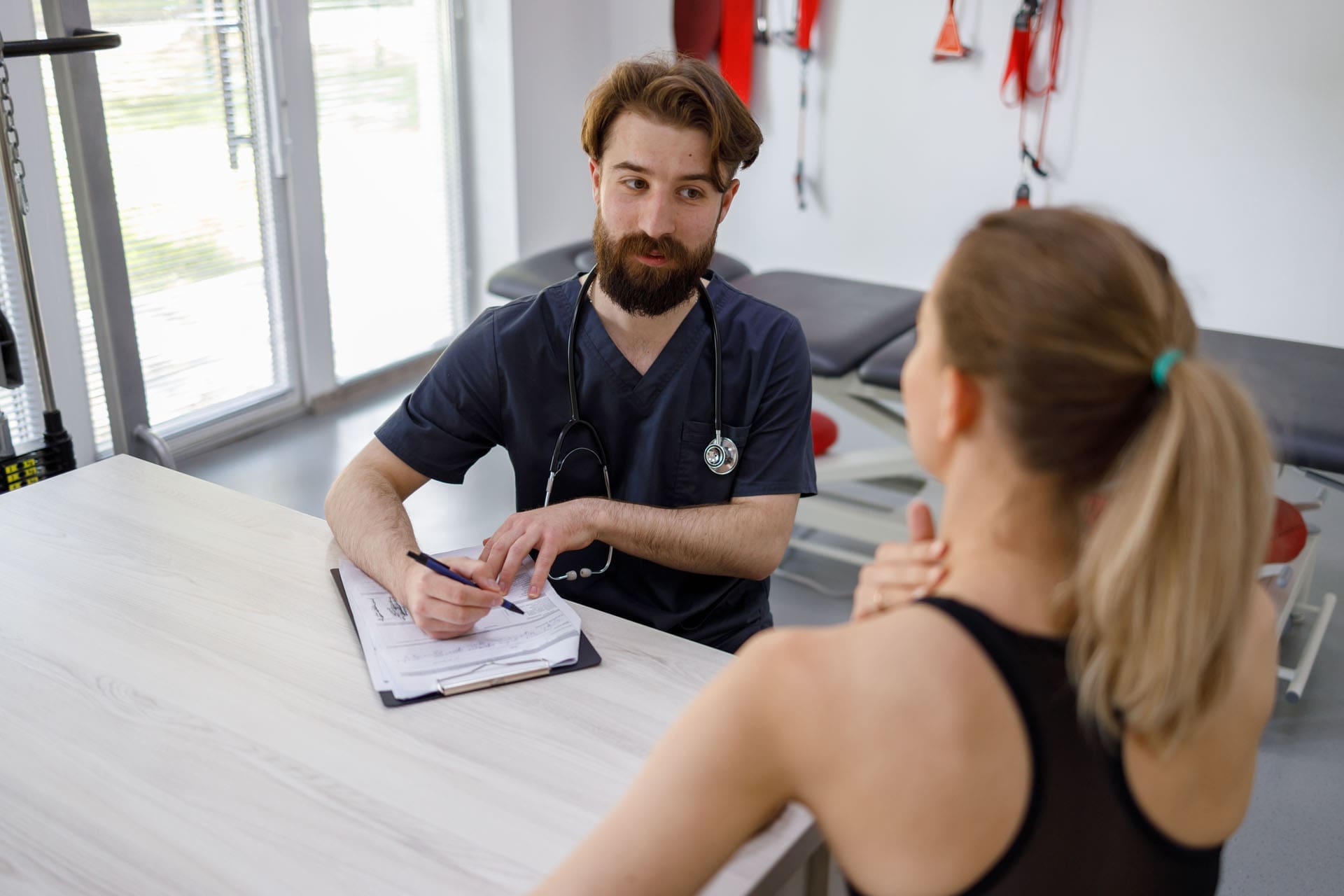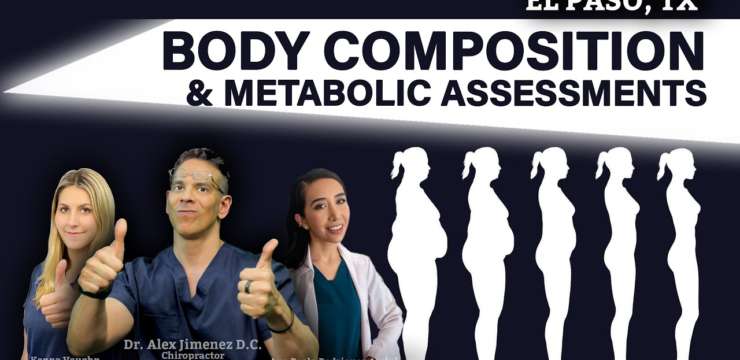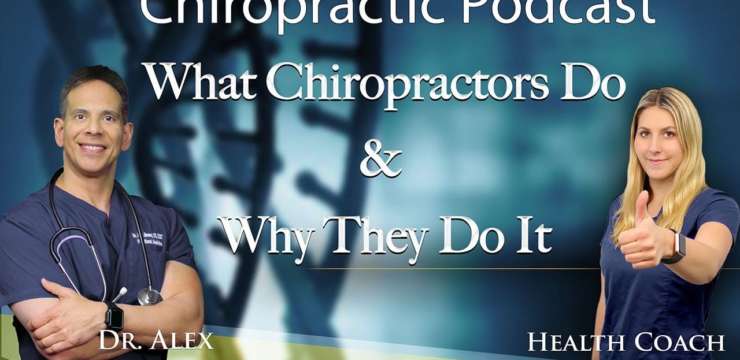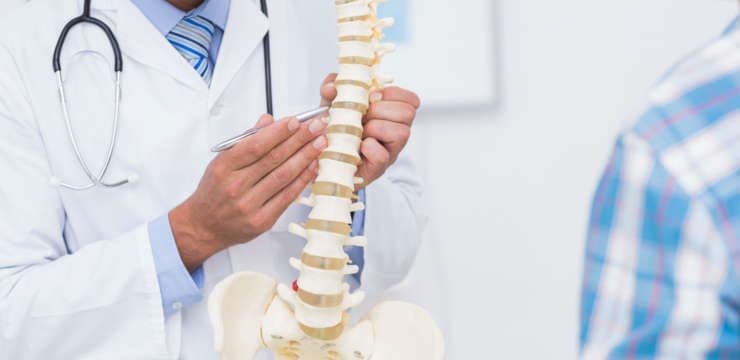
Table of Contents
Sports Head Injuries: Concussions, More Serious Brain Injuries, and How Integrative Care Helps Recovery

Overview
Sports are good for health and community. Still, head injuries happen. Concussions are the most common sports-related head injury. But more serious injuries—like brain contusions (bruises), intracranial hematomas (bleeding inside the skull), and skull fractures—can also occur (WebMD, n.d.; Cleveland Clinic, n.d.-a; Mayo Clinic, n.d.-a). The most common cause is a hit to the head or a hard shake that makes the brain move quickly inside the skull (Cleveland Clinic, n.d.-a).
This article explains the main types of head injuries seen in sports, warning signs, diagnosis, and safe return-to-play steps. It also demonstrates how chiropractors and integrative medicine specialists collaborate with medical teams to manage neck, balance, headache, and movement issues following a concussion, and support natural healing (Carr Chiropractic Clinic, n.d.; ThinkVida, n.d.; Aurora Chiropractic, n.d.). Throughout, we incorporate clinical insights shared by Dr. Alexander Jimenez, DC, APRN, FNP-BC, who emphasizes a whole-person, team-based approach that combines spine care, vestibular and visual rehabilitation, graded exercise, and lifestyle support (Jimenez, n.d.-a; Jimenez, n.d.-b).
The Most Common Sports Head Injuries
Concussion (mild traumatic brain injury)
A concussion is a mild brain injury caused by a hit or strong shake that changes how the brain works for a short time (Cleveland Clinic, n.d.-a; OrthoInfo/AAOS, n.d.). You do not need to be “knocked out” to have a concussion. Symptoms may appear immediately or develop hours later (Cleveland Clinic, n.d.-a). Most people recover, but repeated concussions or poor management can lead to longer-term problems with memory, attention, and mood (OrthoInfo/AAOS, n.d.; CDC, n.d.).
Common symptoms include headache, dizziness, balance issues, neck pain, nausea, sensitivity to light and noise, “brain fog,” slower thinking, and sleep disturbances (Cleveland Clinic, n.d.-a; OrthoInfo/AAOS, n.d.). In children or teammates, look for clues on the field by observing a dazed look, confusion, clumsy movement, delayed answers, or behavioral changes (Mayo Clinic, n.d.-a; OrthoInfo/AAOS, n.d.).
Brain contusion (bruising)
A brain contusion is a bruise on brain tissue from a direct blow. Symptoms depend on size and location and may include headache, confusion, or weakness. Large contusions can be dangerous and need emergency care (WebMD, n.d.).
Intracranial hematomas (bleeding)
Bleeding into spaces around the brain can be life-threatening. Two types often discussed in sports are:
-
Epidural hematoma: bleeding between the skull and the outer brain covering, often linked to a skull fracture. People may have a brief “lucid interval,” then get worse quickly—this is an emergency (WebMD, n.d.).
-
Subdural hematoma (SDH): bleeding under the outer covering, often from torn bridging veins; acute SDH carries a high risk and needs urgent neurosurgical care (Wang et al., 2020).
Skull fractures
A skull fracture is a break in the skull bone from a direct hit or fall. Some fractures are simple; others can press inward or involve tears in protective layers. Any suspected skull fracture needs immediate medical evaluation (Children’s Minnesota, n.d.).
Which Sports Carry a Higher Risk?
Contact and collision sports have higher rates of head impacts. Football, ice hockey, lacrosse, soccer, wrestling, and rugby are often cited, but head injuries also occur in “non-contact” sports such as cheer, basketball, and baseball/softball—usually from falls, collisions, or equipment hits (CDC, n.d.; GSA Medicine, n.d.). Throws, slams, and takedowns in combat sports, as well as falls in gymnastics or cycling, also increase the risk (Arsenian Law, n.d.). Many concussions in teens occur during school and club sports, with high rates reported in football, hockey, lacrosse, and soccer (NeuraPerformance/Neural Effects, n.d.; CDC, n.d.).
Signs and Symptoms: What to Watch For
Typical concussion symptoms (one or more) (Cleveland Clinic, n.d.-a; OrthoInfo/AAOS, n.d.):
-
Headache or “pressure” in the head
-
Dizziness or balance problems
-
Nausea or vomiting
-
Blurry vision or double vision
-
Sensitivity to light or noise
-
Feeling slow, foggy, or not yourself
-
Trouble concentrating or remembering
-
Sleep changes (too much or too little)
-
Neck pain or stiffness
Observable clues during play (Mayo Clinic, n.d.-a; OrthoInfo/AAOS, n.d.):
-
Dazed, stunned, or confused
-
Forgets plays or position
-
Moves clumsily or appears off-balance
-
Answers questions slowly
-
Shows mood or behavior changes
-
Can’t recall events right before/after hit
Red-flag emergencies—call 911 or go to the ER (Mayo Clinic, n.d.-a; WebMD, n.d.; Cleveland Clinic, n.d.-b):
-
Worsening headache, repeated vomiting, or seizure
-
Slurred speech, weakness/numbness, or new confusion
-
One pupil is larger than the other
-
Loss of consciousness, drowsiness that worsens, or not being able to wake up
-
Clear fluid or blood from the nose/ears
-
Suspected skull fracture or neck injury

How Head Injuries Are Diagnosed
A clinician will take a symptom history, check thinking, memory, balance, and eye movements, and examine the neck (OrthoInfo/AAOS, n.d.; Mayo Clinic, n.d.-b). Neurocognitive tests can track recovery over time. Most concussions do not need a CT or MRI, but imaging is used when red-flag signs suggest bleeding, skull fracture, or more serious injury (Mayo Clinic, n.d.-b; WebMD, n.d.). For suspected SDH or epidural hematoma, rapid imaging and neurosurgical evaluation are critical (Wang et al., 2020).
Early Care: Rest Smart, Then Gradual Activity
Current guidance recommends relative rest (not strict “dark room” rest) for the first 24–48 hours, followed by a stepwise return to light activity, as long as symptoms do not worsen (OrthoInfo/AAOS, n.d.; McCrory et al., 2013; Schneider et al., 2013). Sleep, hydration, good nutrition, and gentle walking can help. Most people improve within a few weeks, but recovery time varies (Mayo Clinic, n.d.-b; Cleveland Clinic, n.d.-a).
Return-to-Play: A Simple 6-Step Progression
A widely used return-to-sport framework advances in stages. You move to the next step only if you have no symptom increase during and for 24 hours after the current step (McCrory et al., 2013; Schneider et al., 2013; OrthoInfo/AAOS, n.d.).
-
Symptom-limited activity: Daily activities that do not provoke symptoms
-
Light aerobic exercise: Walking or stationary biking (no resistance)
-
Sport-specific exercise: Skating in hockey, running drills in soccer (no head impact)
-
Non-contact training drills: More complex drills may add light resistance
-
Full-contact practice: After medical clearance
-
Return to competition: Normal game play
If symptoms return, drop back to the previous step and try again after 24 hours (Schneider et al., 2013).
Why the Neck and Upper Back Matter After Concussion
Even when brain scans are normal, many athletes have cervical spine and upper back problems after a head hit. Whiplash-like forces can strain joints and soft tissues, creating headaches, neck pain, dizziness, and balance issues (Carr Chiropractic Clinic, n.d.; Aurora Chiropractic, n.d.). Cervicogenic headaches—headaches driven by neck structures—are common and can worsen with effort or high blood pressure spikes (Studio Athletica, n.d.). Addressing neck mobility, deep neck flexor strength, and posture can often reduce symptoms and speed up the return to normal activity (Carr Chiropractic Clinic, n.d.; Mountain Movement Center, n.d.).
The Role of Chiropractors and Integrative Medicine Specialists
Team-based care works best. Chiropractors and integrative medicine providers commonly support concussion recovery in four ways, while collaborating with MDs, DOs, PTs, ATCs, neuro-optometrists, and neuropsychologists (Carr Chiropractic Clinic, n.d.; ThinkVida, n.d.; Eastlake Chiropractic, n.d.):
-
Cervical and thoracic assessment/care
-
Gentle, evidence-informed manual therapy for joints and soft tissues
-
Mobility drills, postural retraining, and deep neck flexor activation
-
Goal: reduce cervicogenic headache and dizziness, improve neck motion (Aurora Chiropractic, n.d.; Carr Chiropractic Clinic, n.d.)
-
-
Vestibular and visual rehab support
-
Balance drills, gaze-stabilization exercises, and visual tracking tasks
-
Progressed carefully to avoid symptom spikes (OrthoInfo/AAOS, n.d.; Mountain Movement Center, n.d.)
-
-
Graded aerobic and strength reconditioning
-
Heart-rate-guided walking/biking, then sport-specific movement
-
Careful increases based on symptom response (Schneider et al., 2013; OrthoInfo/AAOS, n.d.)
-
-
Lifestyle and recovery coaching
-
Sleep hygiene, hydration, nutrition for brain healing, and light exposure timing
-
Stress reduction and gradual return to school/work as appropriate (Mayo Clinic, n.d.-b; Cleveland Clinic, n.d.-a)
-
Clinical observations (Dr. Alexander Jimenez):
In dual-scope practice, common post-concussion clusters include neck-driven headaches, oculomotor strain, and exertional intolerance. A practical plan starts with cervical mobility and deep neck flexors, adds basic vestibular/visual drills, and introduces heart-rate-limited aerobic work. Most athletes benefit from a simple, written symptom log and a 24-hour rule for step-ups. Nutrition (omega-3s in food, plenty of protein, greens, and hydration), regular sleep windows, and gentle daylight exposure help recovery. Close MD/ATC/PT communication prevents over- or under-resting (Jimenez, n.d.-a; Jimenez, n.d.-b).
Chiropractors should refer immediately to emergency care when red flags appear (e.g., worsening headache, repeated vomiting, severe drowsiness, unequal pupils, seizures, or suspected skull fracture/hematoma) and coordinate imaging and specialist care as needed (Mayo Clinic, n.d.-a; WebMD, n.d.; Children’s Minnesota, n.d.).
Headaches, Blood Pressure Spikes, and Lifting
Headaches are common after a concussion. They may worsen with heavy lifting or activities that spike blood pressure (e.g., maximal weight sets) (Studio Athletica, n.d.). Early in recovery, avoid heavy straining. Re-introduce strength training with lighter loads, higher reps, and stable neck positioning. If headache spikes during or after activity, stop and step back to the last symptom-free level (Schneider et al., 2013; OrthoInfo/AAOS, n.d.).
Special Concerns: Children and Teens
Young athletes may experience longer recovery times and be more susceptible to repeat injuries if they return too soon (CDC, n.d.; OrthoInfo/AAOS, n.d.). Follow medical guidance closely, notify coaches and teachers, and use a school/work-return plan that matches the sports plan: start with short bursts of cognitive activity, then gradually increase as tolerated (Mayo Clinic, n.d.-b; Cleveland Clinic, n.d.-a).
Preventing Sports Head Injuries
No single step prevents all head injuries, but many small steps add up (CDC, n.d.; GSA Medicine, n.d.; OrthoInfo/AAOS, n.d.):
-
Technique and rules: Teach safe tackling, checking, and heading. Enforce penalties for dangerous play.
-
Protective gear: Use sport-specific, well-fitted helmets and mouth guards (when recommended). Helmets do not prevent concussions but reduce some severe injuries.
-
Neck strength and posture: Strong neck muscles and good posture may reduce head acceleration during impacts.
-
Conditioning and flexibility: Enhance core, hip, and shoulder strength to reduce fall risk and protect the neck.
-
Vision and balance training: Better tracking and balance may improve reaction to collisions.
-
Sleep and hydration: Both affect reaction time, mood, and recovery.
-
Culture change: Encourage honest symptom reporting and remove the “play through it” pressure.
A Simple, Athlete-Friendly Recovery Plan
-
First 24–48 hours: Relative rest, good sleep, hydration, calm activities (Cleveland Clinic, n.d.-a; Mayo Clinic, n.d.-b).
-
Days 2–7: Short walks or easy cycling, gentle neck mobility, simple balance/eye drills; stop if symptoms rise and retry the next day (Schneider et al., 2013).
-
Week 2+: More challenging balance and visual tasks; add light resistance training; begin sport-specific movement without contact (OrthoInfo/AAOS, n.d.).
-
Medical re-check: If stable, resume non-contact practice; after full practice without symptoms, return to games (McCrory et al., 2013; OrthoInfo/AAOS, n.d.).
-
If symptoms flare: Drop back to the last stage that felt okay and progress more slowly (Schneider et al., 2013).
When to Seek Immediate Emergency Care
Call 911 or go to the ER if you notice any of the following after a head injury: worsening headache, repeated vomiting, seizure, weakness or numbness, slurred speech, unequal pupils, severe confusion, or trouble staying awake. Also seek urgent care if you suspect a skull fracture or any bleeding inside the skull (Mayo Clinic, n.d.-a; Cleveland Clinic, n.d.-b; WebMD, n.d.; Children’s Minnesota, n.d.; Wang et al., 2020).
How Integrative Clinics Coordinate Care
Chiropractors and integrative clinicians:
-
Screen and triage for emergent risks; refer for imaging when needed
-
Coordinate with primary care, neurology, sports medicine, PT, ATC, and school/coach teams
-
Map a plan with clear steps for neck care, graded exercise, vestibular/visual rehab, and headache management
-
Track progress with simple checklists and objective balance or eye-movement measures
-
Educate athletes and families about sleep, nutrition, stress, and pacing (Mayo Clinic, n.d.-b; OrthoInfo/AAOS, n.d.; Carr Chiropractic Clinic, n.d.; Jimenez, n.d.-a)
This shared-care model supports safety, reduces confusion, and shortens the time spent away from school, work, and sports.
Key Takeaways
-
Concussions are the most common sports head injury, but brain contusions, hematomas, and skull fractures also occur (WebMD, n.d.; Cleveland Clinic, n.d.-a; Children’s Minnesota, n.d.).
-
Watch for headaches, dizziness, fogginess, balance issues, and behavioral changes; be aware of the red flags (Mayo Clinic, n.d.-a; OrthoInfo/AAOS, n.d.).
-
Use a stepwise return-to-activity plan and pause if symptoms rise (Schneider et al., 2013; McCrory et al., 2013).
-
Neck and upper-back care, vestibular/visual rehab, and graded exercise are central to recovery (Carr Chiropractic Clinic, n.d.; Aurora Chiropractic, n.d.; Mountain Movement Center, n.d.).
-
Integrative, team-based care improves safety and supports the body’s natural healing (ThinkVida, n.d.; Eastlake Chiropractic, n.d.; Jimenez, n.d.-a).
References
-
Arsenian Law. (n.d.). Most common sports that lead to brain injuries. www.arsenian.com/blog/most-common-sports-that-lead-to-brain-injuries/
-
Carr Chiropractic Clinic. (n.d.). The role of chiropractic care in concussion management. www.carrchiropracticclinic.com/the-role-of-chiropractic-care-in-concussion-management/
-
CDC. (n.d.). HEADS UP: Concussion & sports injury data. www.cdc.gov/heads-up/data/index.html
-
Children’s Minnesota. (n.d.). Skull fracture. www.childrensmn.org/educationmaterials/childrensmn/article/21929/skull-fracture/
-
Cleveland Clinic. (n.d.-a). Concussion. my.clevelandclinic.org/health/diseases/15038-concussion
-
Cleveland Clinic. (n.d.-b). Head injury. my.clevelandclinic.org/health/diseases/head-injury
-
Eastlake Chiropractic & Medical Center. (n.d.). How chiropractors can help sports concussions. www.eastlakechiro.com/blog/posts/how-chiropractors-can-help-sports-concussions/
-
GSA Medicine. (n.d.). Common head injuries in athletes: Signs and treatments. gsamedicine.com/common-head-injuries-in-athletes-signs-and-treatments/
-
Jimenez, A. (n.d.-a). Dralexjimenez.com (clinical insights). dralexjimenez.com/
-
Jimenez, A. (n.d.-b). LinkedIn profile (practice insights). www.linkedin.com/in/dralexjimenez/
-
Mayo Clinic. (n.d.-a). Concussion: Symptoms & causes. www.mayoclinic.org/diseases-conditions/concussion/symptoms-causes/syc-20355594
-
Mayo Clinic. (n.d.-b). Traumatic brain injury: Diagnosis & treatment. www.mayoclinic.org/diseases-conditions/traumatic-brain-injury/diagnosis-treatment/drc-20378561
-
McCrory, P., Meeuwisse, W., Aubry, M., et al. (2013). Consensus Statement on Concussion in Sport (Zurich 2012). pmc.ncbi.nlm.nih.gov/articles/PMC3959977/
-
Mountain Movement Center. (n.d.). Addressing common sports injuries with chiropractic: Concussions. www.mountainmovementcenter.com/post/addressing-common-sports-injuries-with-chiropractic/
-
NeuraPerformance/Neural Effects. (n.d.). High school sports cause most concussions? neuraleffects.com/blog/high-school-sports-cause-most-concussions/
-
OrthoInfo/AAOS. (n.d.). Sports concussion. orthoinfo.aaos.org/en/diseases–conditions/sports-concussion/
-
Schneider, K., Meeuwisse, W., Nettel-Aguirre, A., et al. (2013). The 6-stage return-to-play protocol (study overview). pmc.ncbi.nlm.nih.gov/articles/PMC3838718/
-
Studio Athletica. (n.d.). Headache and exertion/weightlifting. www.studioathletica.com/conditions-treatments/spine-physiotherapy/headache/
-
ThinkVida. (n.d.). Treating concussions with chiropractic care. thinkvida.com/blog/treating-concussions-with-chiropractic-care/
-
Wang, W., Li, H., Li, Y., et al. (2020). Acute subdural hematoma overview. pmc.ncbi.nlm.nih.gov/articles/PMC7755598/
-
WebMD. (n.d.). Head injuries: Causes & treatments. www.webmd.com/fitness-exercise/head-injuries-causes-and-treatments
-
Additional resource: APTIVA Health. (n.d.). Sports injuries & conditions: Concussion notes. www.aptivahealth.com/sports-injuries-conditions/
-
Additional resource: Aurora Chiropractic. (n.d.). Chiropractic care for head injuries. aurora-chiropractic.com/chiropractic-care-for-head-injuries/
-
Additional resource: El Paso Chiropractic. (n.d.). Fueling athletic potential: Chiropractic care for young athletes. elpasochiropractic.com/f/fueling-athletic-potential-chiropractic-care-for-young-athletes
-
Additional resource: Grant Chiropractic Care. (n.d.). Chiropractors & recovery after concussion. www.grantchirocare.com/chiropractors-recovery-after-concussion/
Disclaimers
Professional Scope of Practice *
The information herein on "Sports Concussion Integrative Recovery Strategies" is not intended to replace a one-on-one relationship with a qualified health care professional or licensed physician and is not medical advice. We encourage you to make healthcare decisions based on your research and partnership with a qualified healthcare professional.
Blog Information & Scope Discussions
Welcome to El Paso's wellness blog, where Dr. Alex Jimenez, DC, FNP-C, a board-certified Family Practice Nurse Practitioner (FNP-C) and Chiropractor (DC), presents insights on how our team is dedicated to holistic healing and personalized care. Our practice aligns with evidence-based treatment protocols inspired by integrative medicine principles, similar to those found on dralexjimenez.com, focusing on restoring health naturally for patients of all ages.
Our areas of chiropractic practice include Wellness & Nutrition, Chronic Pain, Personal Injury, Auto Accident Care, Work Injuries, Back Injury, Low Back Pain, Neck Pain, Migraine Headaches, Sports Injuries, Severe Sciatica, Scoliosis, Complex Herniated Discs, Fibromyalgia, Chronic Pain, Complex Injuries, Stress Management, Functional Medicine Treatments, and in-scope care protocols.
Our information scope is limited to chiropractic, musculoskeletal, physical medicine, wellness, contributing etiological viscerosomatic disturbances within clinical presentations, associated somato-visceral reflex clinical dynamics, subluxation complexes, sensitive health issues, and functional medicine articles, topics, and discussions.
We provide and present clinical collaboration with specialists from various disciplines. Each specialist is governed by their professional scope of practice and their jurisdiction of licensure. We use functional health & wellness protocols to treat and support care for the injuries or disorders of the musculoskeletal system.
Our videos, posts, topics, subjects, and insights cover clinical matters, issues, and topics that relate to and directly or indirectly support our clinical scope of practice.*
Our office has reasonably attempted to provide supportive citations and has identified the relevant research studies or studies supporting our posts. We provide copies of supporting research studies available to regulatory boards and the public upon request.
We understand that we cover matters that require an additional explanation of how they may assist in a particular care plan or treatment protocol; therefore, to discuss the subject matter above further, please feel free to ask Dr. Alex Jimenez, DC, APRN, FNP-BC, or contact us at 915-850-0900.
We are here to help you and your family.
Blessings
Dr. Alex Jimenez DC, MSACP, APRN, FNP-BC*, CCST, IFMCP, CFMP, ATN
email: coach@elpasofunctionalmedicine.com
Licensed as a Doctor of Chiropractic (DC) in Texas & New Mexico*
Texas DC License # TX5807
New Mexico DC License # NM-DC2182
Licensed as a Registered Nurse (RN*) in Texas & Multistate
Texas RN License # 1191402
ANCC FNP-BC: Board Certified Nurse Practitioner*
Compact Status: Multi-State License: Authorized to Practice in 40 States*
Graduate with Honors: ICHS: MSN-FNP (Family Nurse Practitioner Program)
Degree Granted. Master's in Family Practice MSN Diploma (Cum Laude)
Dr. Alex Jimenez, DC, APRN, FNP-BC*, CFMP, IFMCP, ATN, CCST
My Digital Business Card






